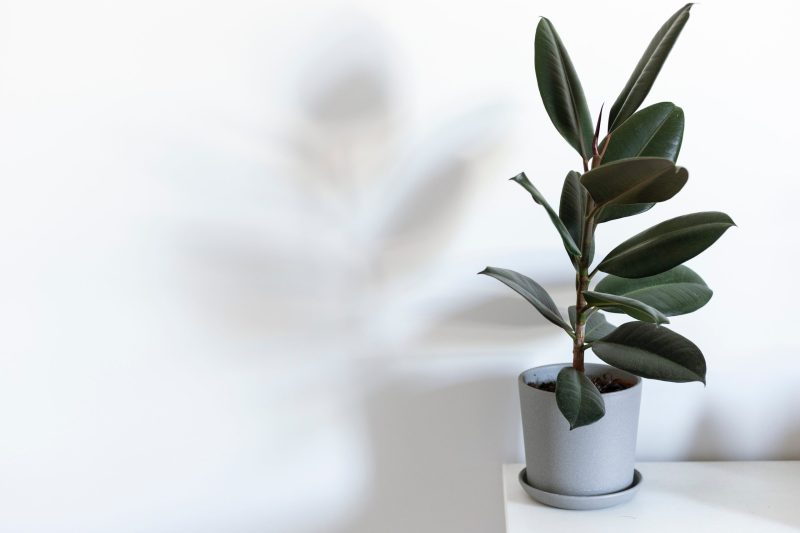Human beings always need to be surrounded by nature. Research shows that human beings are instinctively drawn to nature and our connection to nature and living things is in their DNA.
On average, people spend 90% of their time indoors, yet many are not aware of the risks associated with indoor environments.
According to a study, ordinary household activities, from dusting to cleaning, can increase your exposure to particulate pollution. Whether cutting the rug or vacuuming it, you may be inhaling tiny dust particles that could harm your health. Having plants indoors is a home-healthy move because of their ability to clean the air of carbon dioxide, and watching them thrive makes us happier, and gives us a feeling of purpose and satisfaction to see them grow.
Benefits of indoor plants
There are several health benefits to keeping houseplants and greenery in the space where we live: wellness enhancements, a greener lifestyle, and healthy happy vibes indoors.
Stress reliever
For a long time, nature has been the best way to reduce stress levels. A randomized crossover study results suggest that active interaction with indoor plants can reduce physiological and psychological stress compared with mental work as nature can serve as a reminder to enjoy the calming feeling and the slower pace of life. Participants experienced feelings of comfort when working with plants versus working on a computer.
Another study found that working with nature in some form, such as houseplants, can help lower stress, lower blood pressure, encourage faster healing, and increase overall happiness.
Better air quality
Houseplants can remove toxicants from the air, soil, and water in at least two ways. They can not only metabolize some harmful compounds, generating harmless by-products, but they may also integrate toxicants like heavy metals into plant tissues, sequestering them.
In 1989, NASA studied that houseplants can help improve air quality by removing cancer-causing chemicals like formaldehyde and benzene from the air. The study concluded that in a 1,800-square-foot house, occupants should incorporate 15 to 18 houseplants in 6- to 8-inch diameter containers to improve air quality. The larger and more vigorously they grow, the better.
Healing
Sending flowers or a plant to someone in recovery helps to brighten up their space — and could also help to speed up the healing process. A 2009 study found that surgery patients in recovery experienced lower pain, anxiety, and fatigue when they had plants in their rooms. Patients have positive feelings about their recovery room, speaking to how just being around plants can uplift their mood.
Better health
For flowering plants, a study found that purple, green, red, pink, and white ones could lower people’s blood pressure and heart rate. However, purple and green flowers were more effective in relaxing the body, reducing anxiety, and improving mood. Another study found that red and yellow roses elicited a more calming response than white ones.
Right plants for every part of your home
A little greenery can transform a space—and breathe fresh life into a room. Choosing the right plants for any corner of the home adds a calming vibe and is also a go-to choice for decor lovers
For bedrooms: Snake Plant
Snake plants can effectively reduce anxiety, respiratory problems, and headache symptoms. It is also a good air purifier. In 1989, NASA studied that houseplants can help improve air quality by removing cancer-causing chemicals like formaldehyde and benzene from the air., from the air inside your home, helping you wake up feeling much more rested and ready to tackle the day.
For living rooms: Peace Lilies and Areca Palm
Peace lilies are very good at removing trichloroethylene and benzene, and also give a lot of moisture in the air.
As with all plants, the Areca Palm is biologically engineered to take in carbon dioxide and release oxygen. What distinguishes the Areca Palm is its capacity to purify the area in which it is grown by eliminating harmful pollutants also including formaldehyde, xylene, and toluene.
For bathrooms: air plants, ferns, and Lady Palm
Bathrooms require plants that thrive in wetness and heat and that can tolerate low light levels. Air plants are tough to kill, do not require soil, and may obtain the majority of their water requirements from the air in a wet atmosphere. Boston ferns are a classic bathroom plant and thrive in filtered light and moist air. Lady Palm is an excellent NASA-approved plant for the bathroom. It can help remove ammonia from the air, a toxin found in many cleaning products
For kitchens: Aloe Vera
Aloe vera has the added benefit of being both a healing plant and a plant that is nearly hard to destroy. For an instant cooling effect, rub the gel-filled inside of the leaves on wounds and burns.
For work corners: Gerbera Daisies and Spider Plants
Gerbera daisies are colorful flowers that pack a purifying punch. In 24 hours, this flower can remove half of the airborne formaldehyde, 67% of the benzene, and 35% of the trichloroethylene, and toxins from the air, particularly those associated with the ink printer.
The spider plant was one of the most potent plants shown to purify the air in the NASA studies and was able to remove 95% of the toxic substance from a sealed Plexiglas chamber in 24 hours.
In conclusion
Having bits of nature in the house, as well as clean, fresh air flowing through it, may help elevate our spirits and brighten our mood. However, people are encouraged to spend time outdoors as much as they can. Nature not only provides many psychological benefits but also creates a sense of belonging and connection to something greater than ourselves.
Plans don’t just look good, they come with a bevy of benefits too. If you would like to learn more about indoor plants, check out Household Management Science Labs. The lab uses the research of the Institute for Life Management Science to produce courses, certifications, podcasts, videos, and other learning materials. Visit the Household Management Science Labs today.  Photo by Justyna Grochowska on Pexels
Photo by Justyna Grochowska on Pexels

